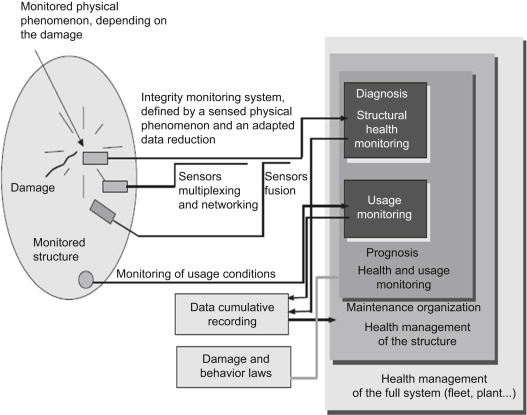Mastering Structural Health Monitoring: A Comprehensive Guide to Sensors and Data Analysis Techniques

Introduction: Structural health monitoring (SHM) is a crucial aspect of maintaining the safety, reliability, and integrity of civil infrastructure, buildings, bridges, dams, pipelines, and aerospace structures. SHM involves the continuous monitoring, assessment, and analysis of structural behavior, performance, and condition using sensors and data analysis techniques. By monitoring structural health in real-time or periodically, engineers and asset managers can detect anomalies, identify damage, predict failures, and make informed decisions regarding maintenance, repair, and retrofitting strategies. In this comprehensive guide, we will explore the principles, methodologies, and best practices of performing structural health monitoring using sensors and data analysis techniques, empowering professionals to ensure the safety and longevity of critical infrastructure assets.
Section 1: Introduction to Structural Health Monitoring
1.1 Overview of Structural Health Monitoring: Structural health monitoring (SHM) is the process of monitoring the condition, performance, and behavior of structures to detect changes, abnormalities, or damage that may affect their integrity and functionality. SHM systems utilize sensors, data acquisition systems, and analytical tools to collect, process, and analyze structural data in real-time or periodically, enabling proactive maintenance, risk mitigation, and asset management strategies.
1.2 Importance of Structural Health Monitoring: Effective structural health monitoring is essential for ensuring the safety, reliability, and sustainability of civil infrastructure and built environments. By continuously monitoring structural conditions and performance parameters, SHM systems enable early detection of defects, deterioration, and damage, allowing stakeholders to implement timely interventions, optimize maintenance practices, and extend the service life of critical assets.
Section 2: Sensors for Structural Health Monitoring
2.1 Types of Sensors Used in SHM: Explore the various types of sensors commonly used in structural health monitoring applications, including strain gauges, accelerometers, displacement sensors, temperature sensors, pressure sensors, acoustic sensors, and imaging sensors. Learn about the principles of operation, sensing mechanisms, and installation techniques for each sensor type and their suitability for different monitoring scenarios.
2.2 Sensor Selection Criteria: Understand the key factors and criteria to consider when selecting sensors for structural health monitoring applications, including measurement range, sensitivity, accuracy, resolution, frequency response, environmental compatibility, durability, and cost-effectiveness. Evaluate sensor specifications, performance characteristics, and calibration requirements to ensure optimal sensor selection and deployment for SHM systems.
2.3 Sensor Installation and Instrumentation: Learn best practices for sensor installation, instrumentation, and calibration in structural health monitoring applications. Follow guidelines for sensor placement, attachment methods, wiring connections, signal conditioning, data acquisition, and calibration procedures to ensure accurate and reliable sensor measurements under operating conditions and environmental influences.
Section 3: Data Acquisition and Processing Techniques
3.1 Data Acquisition Systems: Explore data acquisition systems and instrumentation platforms used in structural health monitoring applications, including wired and wireless data acquisition systems, data loggers, distributed sensor networks, and remote monitoring solutions. Understand the capabilities, features, and limitations of different data acquisition technologies and select the most suitable system for specific monitoring objectives and requirements.
3.2 Signal Processing and Feature Extraction: Learn signal processing techniques and feature extraction methods for analyzing sensor data collected from structural health monitoring systems. Apply digital signal processing algorithms, time-domain analysis, frequency-domain analysis, wavelet transforms, and statistical methods to extract relevant features, patterns, and anomalies indicative of structural health status and performance.
3.3 Data Fusion and Integration: Implement data fusion and integration strategies to combine sensor data from multiple sources and modalities for comprehensive structural health monitoring analysis. Integrate data from different sensors, measurement techniques, and monitoring platforms to enhance data quality, reliability, and information content, enabling more accurate and comprehensive assessment of structural condition and behavior.
Section 4: Structural Health Monitoring Applications and Case Studies
4.1 Bridge Health Monitoring: Explore case studies and applications of structural health monitoring in bridge infrastructure, including monitoring of bridge decks, superstructures, substructures, and foundation systems. Learn how SHM systems are used to detect deterioration, corrosion, fatigue cracking, and structural abnormalities in bridges, enabling proactive maintenance and lifecycle management strategies.
4.2 Building Health Monitoring: Investigate building health monitoring applications for assessing the condition, performance, and safety of residential, commercial, and institutional structures. Discover how SHM systems monitor structural vibrations, settlement, tilting, temperature variations, and environmental factors to identify structural deficiencies, occupancy patterns, and safety hazards in buildings.
4.3 Infrastructure Health Monitoring: Examine case studies of structural health monitoring applications in other infrastructure sectors, including dams, pipelines, tunnels, and aerospace structures. Understand how SHM systems monitor dam displacements, pipeline integrity, tunnel deformations, and aircraft structural health to ensure operational safety, reliability, and regulatory compliance.
Section 5: Best Practices for Structural Health Monitoring
5.1 System Design and Implementation: Design and implement structural health monitoring systems using a systematic approach, considering project objectives, monitoring requirements, sensor technologies, data acquisition methods, and analysis techniques. Develop monitoring plans, sensor layouts, instrumentation strategies, and data management protocols to ensure successful deployment and operation of SHM systems.
5.2 Data Interpretation and Decision-Making: Interpret sensor data and analysis results accurately to make informed decisions regarding structural health and maintenance priorities. Combine quantitative data analysis with qualitative engineering judgment and domain expertise to assess structural condition, prioritize maintenance actions, and optimize asset management strategies based on risk, performance, and lifecycle considerations.
5.3 Continuous Monitoring and Performance Evaluation: Establish protocols for continuous monitoring and performance evaluation of structural health monitoring systems to ensure ongoing effectiveness and reliability. Conduct periodic system checks, sensor calibrations, data validation, and performance audits to maintain data quality, reliability, and compliance with monitoring objectives and industry standards.
Conclusion: Structural health monitoring using sensors and data analysis techniques offers a proactive approach to assessing, managing, and maintaining the safety and integrity of critical infrastructure assets. By leveraging advanced sensor technologies, data acquisition systems, and analytical tools, engineers and asset managers can monitor structural health in real-time, detect anomalies, and implement timely interventions to mitigate risks and optimize asset performance. With proper planning, implementation, and continuous improvement, structural health monitoring systems enable stakeholders to ensure the longevity, reliability, and sustainability of civil infrastructure, buildings, and industrial facilities in the face of evolving operational challenges and environmental pressures.




